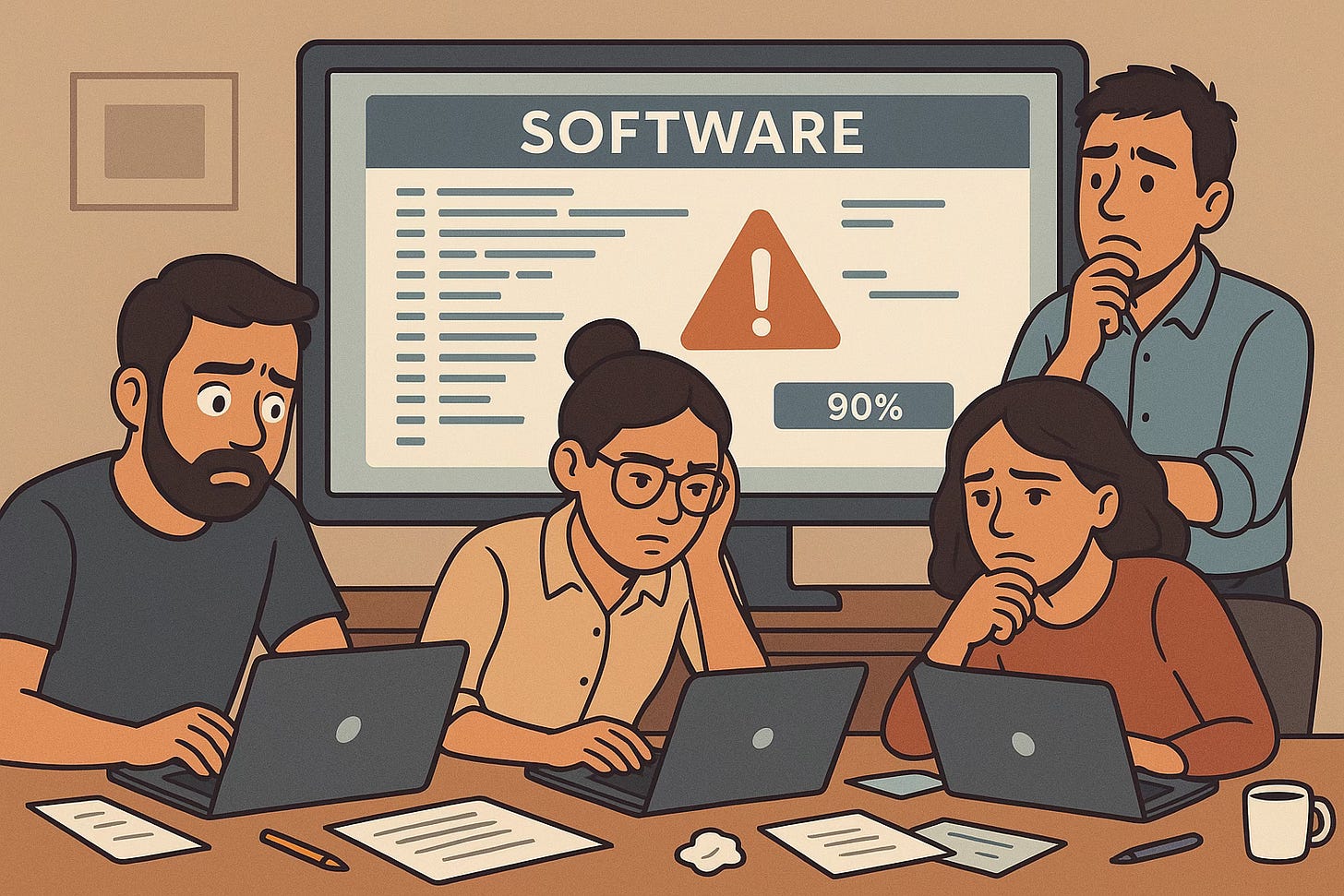When is the right time for a fractional product & technology partner?
Avoiding the 80% trap and why scrappy prototypes often aren't enough
Non-technical founders are capable of building amazing things with no-code platforms like Bubble, automation tools like Zapier and AI-first tools like Lovable. If you’re non-technical, there is no better time to turn an idea into a prototype for customer and investor validation, but they can only get you so far.
The Chasm Between Prototype and Product
Prototypes are meant to be scrappy, as the faster you validate your product, the better. In the interest of speed, corners are cut, and especially for non-technical founders, you may not know what you don’t know, which means you don't know what to tell your dev team (whether real or AI).
This early phase is a bit like an extended hackathon: exciting, fast-moving, full of visible progress. You see features coming to life, early users signing up and maybe even some revenue flowing in. You’ve built something that technically works, it feels like you’re 80% of the way there. Maybe more.
But that final 20% is often where the extended work lives. It's handling edge cases when users do unexpected things, or addressing the random bug that actually isn’t that random and seriously impacting your users. It's this “unglamorous” work that separates a promising prototype full of your assumptions about how users will use your product, from a product built for how users actually do use it.
This post-validation moment is an inflection point, the stage where the right fractional partner can have outsized impact, especially if budget kept them out earlier.
From Frankenstein to Foundation
Most non-technical (and technical) founders start with what I call a "Frankenstein" product: a patchwork of different tools, manual processes and quick fixes stitched together. That's not just okay, it's often smart, as you get to focus on what makes you different instead of commoditized features.
But at some point, that Frankenstein product needs to evolve into a solid foundation for you and your users. Here’s how to tell if it’s time:
You’re not sure which features are actually driving user value, or what metrics to be focusing on. Everything feels like a guess and the increasing complexity is making things worse.
Your roadmap feels like a wishlist rather than a plan. You have no idea if estimates are accurate. When your developer says "that'll take two weeks," you have no context for whether that's reasonable.
Every update breaks something else. You fix the login issue, but now the payment system isn’t working. You’re stuck in debugging hell with little confidence in releasing new features or making changes to existing ones.
All knowledge lives in one person's head. Your contract (or AI) developer is the only one who understands how anything works. There's little-to-no documentation, tests or structure. You're not sure what happens when code is "deployed," or where your data lives, or how to recover if something goes wrong or if your dev gets hit by a bus. This also makes hiring new devs even harder.
You're making expensive mistakes. Using a technology stack nobody else knows, or paying $2,000 a month for something that should cost $200. The manual processes are taking too much time. This is more than just time and money, it’s a signal you need a partner.
The right fractional partner can help you bridge this gap systematically, transforming your patchwork solution and processes into the solid foundation your business needs to scale.
Flexible Ways to Partner
Typical engagements are two-staged:
Stage 1 (2–4 weeks, depending on complexity): An audit of your current setup, followed by delivery of a product roadmap and prioritized recommendations that balance growth with stability.
Stage 2 (Ongoing partnership): Continued collaboration with you and your development resources to support implementation of that roadmap.
What they won’t do is write all your code or be available 24/7 for every technical fire. Think strategic liaison, helping you scope, prioritize, de-risk, and sequence work so your team isn’t just building, but building the right things in the right order.
If an ongoing relationship doesn’t make sense for your stage or budget, consider doing just the stage 1 audit where you get the roadmap and recommendations, but then take full ownership over implementation. It’s a smaller upfront investment that can prevent costly mistakes, plus you can always decide to add ongoing support later.
Making the Call
The best time to bring on a fractional partner is usually 6-12 months before you think you’ll need a full-time resource. They can help you build the foundation and processes that will make that eventual full-time hire more successful.
If you're wrestling with these kinds of product and technology decisions and wondering whether fractional support makes sense for your stage and situation, let's chat about it. Sometimes a 30-minute conversation can save you months of headaches.


